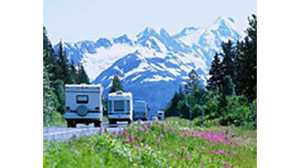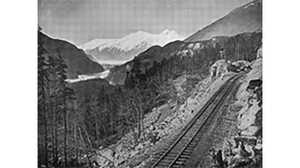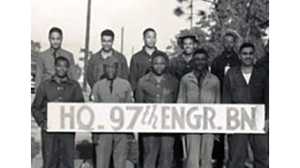Populating Alaska
In 1941, Ruth Gruber went to the American territory of Alaska under the auspices of Secretary of the Interior Harold Ickes. Her mission? To complete a social and economic policy study, with the goal of recommending ways to populate the Alaskan frontier and conserve its natural resources and beauty.
In this excerpt, Gruber describes some of the people she met in Fairbanks, and describes her hopes for bringing settlers to the territory.
Stretching up in the distance, as we neared Talkeetna, was Mount McKinley. The tallest mountain peak in North America, it was a sculpted mass of ice and snow and rock. Once again I became aware of how empty this land was, how easily newcomers and refugees could have lived here, liberated from the fires burning in Europe...
Peggy Gordon... owned a successful dress shop in midtown. Sweltering in the heat, I dropped in and chatted with her. Because laundering was so costly (blamed like everything else on the high cost of transportation), it was cheaper for me to buy a new white blouse each week from Peggy than to have the one from the previous week washed and ironed.
Peggy had spent twelve years "Outside" -- in the lower forty-eight -- bringing up her son, who was now thirty, and her daughter, who had been "Miss Fairbanks." Moving back to Alaska, Peggy became the head of the Women's Club in Anchorage. But in Fairbanks, where she now lived, she was too busy running her shop to go to meetings.
"I'm really in love with this town," she told me. "The people here are so warm and democratic. Everybody digs in. It's awfully hard on women though. They have to keep the fire burning all winter. The days are short, and it gets so cold, and there is so much to do, but there is a real heroic spirit." She nodded, watching me jot her words in my notebook. Then she went on. "The real trouble with Alaska," she said, lowering her voice confidentially, "is that Alaskans think they are so much better than everyone else who comes up here. They think they are just the best people in the world." She conjured up an image of Alaskans standing with one leg on the gravy train and the other leg free to kick everyone else off.
Her husband, Frank, a small man with a shock of white hair and a Scottish brogue, entered the shop. He was a member of the legislature, and for long intervals left Peggy alone while he worked on bills and committees in Juneau. He joined the conversation as if he were making a speech.
"I'd like to see ten or twenty thousand people come up here when they build the Alaska Highway. But the think I have against your boss Ickes is that he wanted to bring six hundred thousand refugees here."
"No, Frank," I said to the legislator, "the bill Ickes tried to introduce would only have brought five thousand Jewish refugees a year to Alaska." I shook my head, thinking, This is the way anti-Semitism takes root. "The Big Lie."
Where did Frank get the six hundred thousand figure? Oddly, it was the number of people Moses had taken from Egypt to the Promised Land, a mass escape from bondage that led to freedom for a mixed multitude.
A few days later, I climbed aboard the Nenana, a paddle wheel steamer owned by the Alaska Railroad, bound for Nome.
Excerpt from Gruber, Ruth. Inside of Time: My Journey from Alaska to Israel. New York: Carroll & Graf Publishers, 2003, pp. 47-54.








